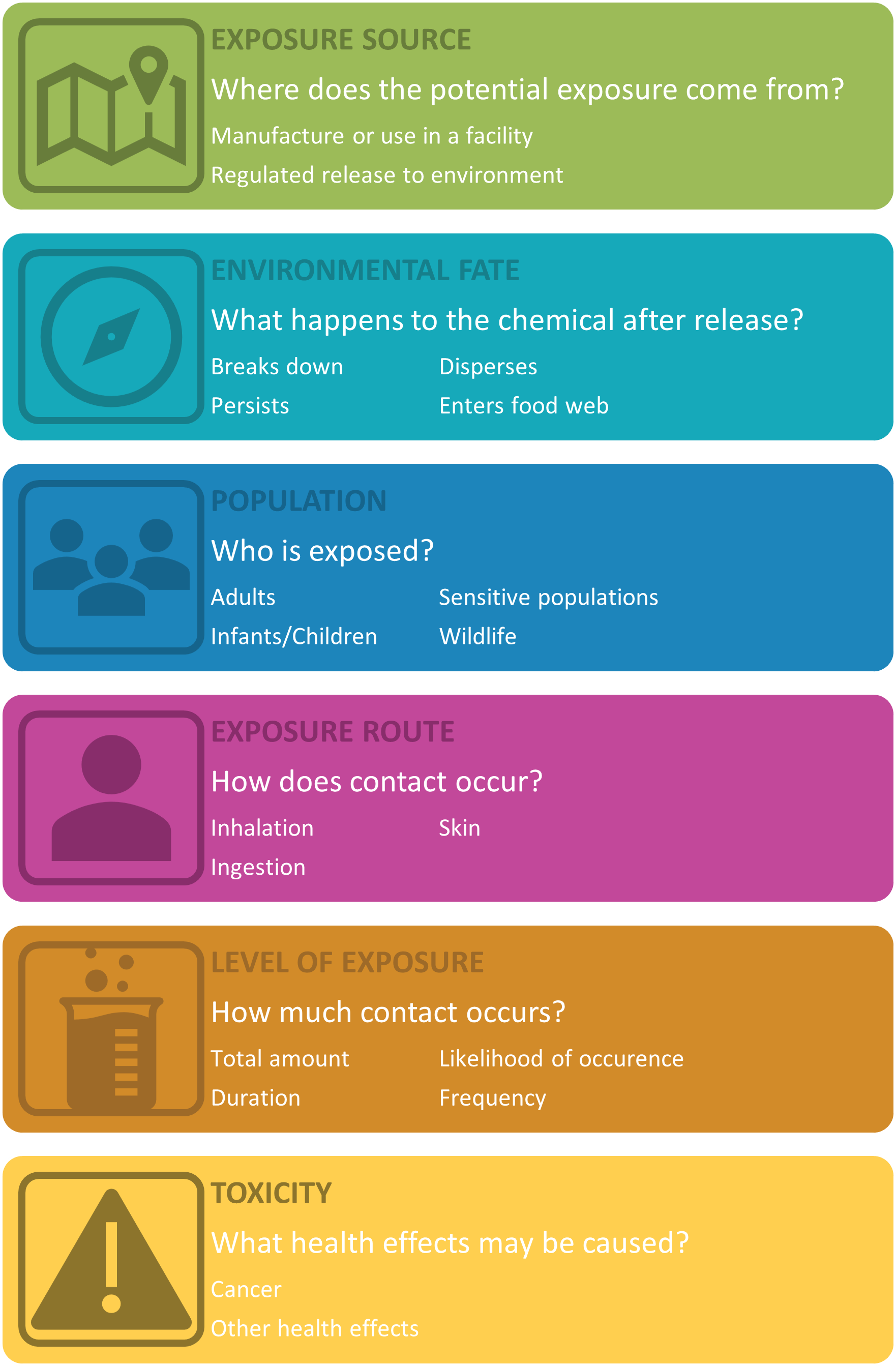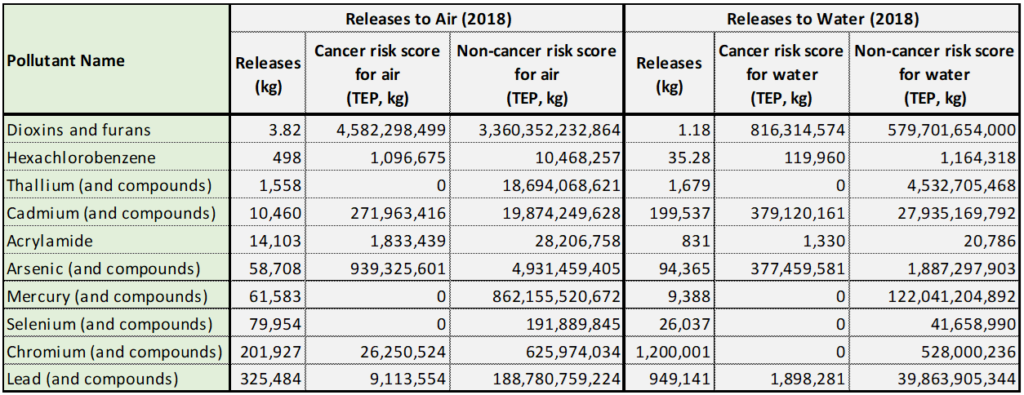1 Overview of Releases and Transfers in North America, 2014–2018
1.5 Factors to Consider when Using PRTR Data to Evaluate Risk
In addition to the amount released or transferred, a number of other factors need to be taken into consideration when trying to assess whether a particular substance poses a risk to human health or the environment. These include the pollutant’s inherent toxicity and its potential to persist in the environment or alter it in some way; the type of release or transfer; the route, timing, and length of exposure; and so on (Figure 8).
Figure 8. Factors to Consider when Using PRTR Data to Evaluate Risk
To add context to North American PRTR data, Taking Stock provides information relative to some of the substances reported under the national PRTR programs and categorized according to their risk for human health and/or the environment.[7] These pollutant categories are: a) known or suspected carcinogens; b) developmental or reproductive toxicants; c) persistent, bioaccumulative, toxic substances; and d) metals. Pollutants may belong to one or more of these categories. Taking Stock Online also provides available toxicity equivalency potentials (TEPs) for pollutants released to air and water. TEPs rank the risk posed by one unit of a pollutant in comparison with one unit of a reference chemical for which the risk to human health is well known (e.g., benzene is the reference chemical for carcinogens). A TEP indicates the risk based on the amount released and the inherent toxicity of a substance, without taking other risk factors into consideration.[8]
TEPs are useful because they draw attention to highly toxic substances that are often released in relatively small quantities and may not otherwise be recognized as pollutants of significance. Table 2 presents ten pollutants released to air and/or water in relatively small or moderate proportions, in 2018, and their corresponding TEP scores. It illustrates the potentially significant impacts of certain pollutants—for example, 3.82 kg in releases to air of dioxins and furans, which can be incidentally generated by certain combustion activities, would be the equivalent of over 4.5 billion kg released to air of benzene.
[7] Information about the categorization of substances is available in “Understanding Taking Stock.”
[8] TEPs are only one of many risk scoring systems, and there are gaps. For instance, many substances do not have assigned TEP weights; and some pollutants—e.g., metals—are reported as groups that include both highly toxic and less toxic compounds, making it difficult to evaluate their risk. More info at: “Understanding Taking Stock.”

